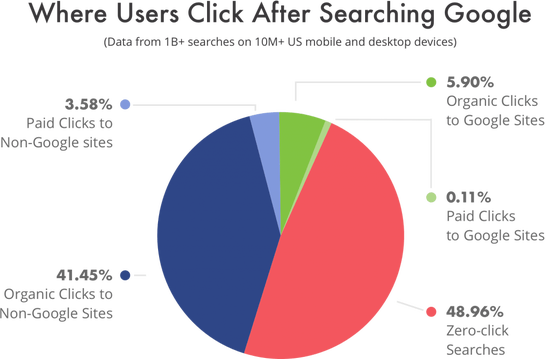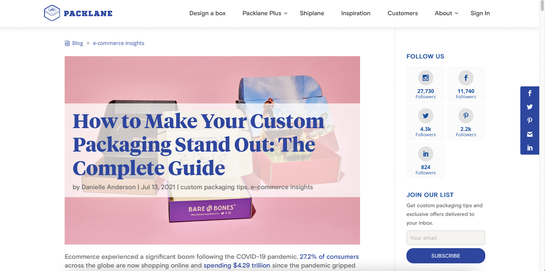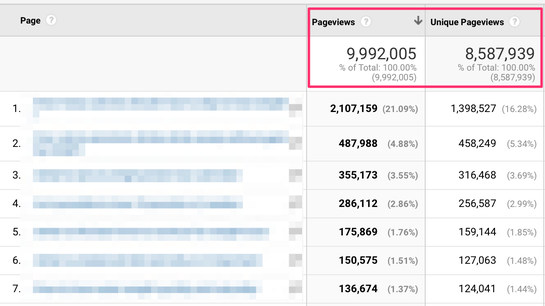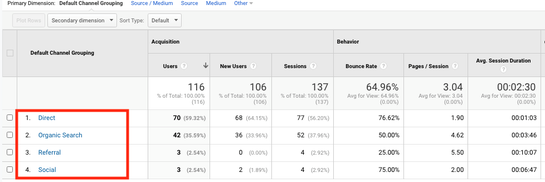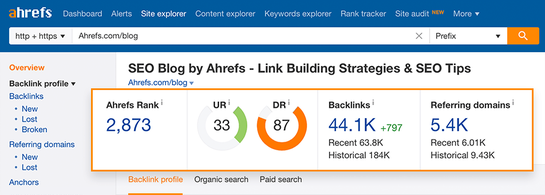How to Create a Winning B2B Content Strategy
Our guide to everything B2B content marketing, from content strategy fundamentals to content types that engage a B2B target audience.
Read More
If you run a business that creates content online and would like your content marketing efforts to be more effective, you must know these top seven content marketing metrics.
Why these specific metrics, you might ask? The metrics we discuss in this blog post are essential to analyzing your content marketing strategies' performance, effectiveness, and shortcomings. After all, when you know how your efforts are performing, you'll know how to make data-driven improvements down the road.
Moreover, these metrics will be your guide to determine whether or not your content marketing strategy is making enough content marketing ROI. The more ROI you get from your content marketing efforts, the better for your business, as you'll essentially get more out of less through amazing content that drives traffic and sales.
Additionally, you still need to be on top of your marketing metrics even if you outsource your marketing to an agency. This way, you can determine if you're getting your money's worth when you outsource.
Curious about which content marketing metrics ought to be on your radar? Keep reading because we're showing you seven different content marketing metrics you need to keep an eye on in this post.
Don't let this acronym scare you: SERP is short for Search Engine Results Page. SERP ranking primarily measures how well Google thinks your content responds to any user's search query.
For most businesses, this is top of funnel content that gets audiences through the door. We've come a long way from simply putting up blog posts that show up on SERP. Because of this, Google SERP now includes many types of content and formats that Google indexes, from sponsored Google ads, blog posts, product listing pages, YouTube videos, podcast episodes, and even forum questions and answers from sites like Quora.
2021 data showing what users are clicking on in a Google search query. (Image source)
When you're monitoring SERP rankings in your content, the higher you rank, the better. This is because most users typically don't check results outside the first page of Google. To rank higher in SERPs, focus on creating high-quality pillar content together with a targeted long-tail keyword. Here's an example of a blog post, a custom packaging guide, that could rank high on Google search even in just a short period using this exact strategy.
Packlane blog post example.
Another critical metric to stay on top of in your content marketing strategy is unique page views. If total page views tell you how many visits a specific web page got as a whole, unique page views instead tell you how many viewers have seen or visited your page without taking into account any repeat views and visits. This means it doesn't calculate how many times a user has visited a page, so even if the person refreshes the page over and over, it'll still count as one unique view.
Pageviews vs. Unique Pageviews in Google Analytics (Image source)
What this metric does is give you insight into the quality of your traffic. Are you getting enough unique viewers on your page? Higher unique page views are a good sign that your content is performing well, as more and more people are landing on your page. It also highlights viewer interest in that particular piece of content — which may hint that you need to create more content just like it.
On the other hand, lower unique page views but high total page views signify that the same people are revisiting your page more than once. Knowing this might point to the effectiveness of campaigns like retargeting ads and the like.
When you weigh these numbers together with your conversion rate, you may be able to glean some important insights about your existing content marketing and advertising efforts.
Pages per session is the average number of pages a user views in a given session. This metric is calculated by dividing the number of page views of users by a gross number of sessions.
So how does knowing this help to better your content marketing efforts? Pages per session show how engaging your content is by measuring how much time people like to spend on your website. This metric, in particular, is essential for content sites that rely on Adsense, advertising, and affiliate revenue, because such content sites earn revenue through the number of pages browsed and time spent on the website. For example, your website has two average pages per session; this indicates an average viewer browses through two pages of content uploaded on your site before leaving.
By getting to know this, you can improve the engagement rate and quality of the content so that people view more pages and spend additional time than usual on your content site. All of this will ensure better content marketing and favorable results for your content and website.
That said, this metric may also be helpful for ecommerce sites. When users are browsing several pages on your site, that might point to an interest in different products in your store. As with any of the metrics discussed in this post, always review these metrics with additional context so you can get the best insights.
Social media giant Facebook has surpassed the value of over 1 billion registered users. The social media platforms under Facebook's ownership individually have the following active users:
These numbers mentioned above indicate an endless pool of audiences on social media ready to consume content. Therefore, social media shares hold a vital position for any brand's content marketing strategy.
Through social media, you can create a stronger connection with your existing audience while also providing updates related to the new content on your website or other platforms. More specifically, your existing audience may even help you boost your organic reach by sharing your content on various social media platforms.
The more shares, the more people will know about your content, and those interested in the type of content you produce will want to see more of it. All of this will have a trickle-down effect on the engagement rate, traffic, and the number of people viewing and taking an interest in your content.
Consider, for example, having an article for HR teams to improve employee morale. This type of content is attractive to people in HR who might share it on sites like LinkedIn. That gets your article in front of other people's networks and may help the performance of your content.
The traffic sources metric measures the type and number of sources driving traffic to your content on the website. Moreover, it provides a comparison between different sources driving user traffic to your content.
There are three main types of traffic sources: direct, referral, search. The traffic from ads, campaigns, and banners isn't included in these three types of sources, even if you're getting traffic through those mediums as well.
Traffic sources from Google Analytics (Image source)
You can use this metric to analyze your web traffic and understand which sources generate the most traffic to your content. Then, you can work on further increasing traffic through the highest traffic generating sources.
Even better: it can also help evaluate the sources that may not bring in much traffic to your site. Knowing this information might mean re-evaluating if you still want to invest time and effort in this platform to drive traffic to your site. Because of this, study each traffic source carefully, then use the data you gather to formulate better strategies that attract qualified traffic via these sources.
Backlinks are essential for any content marketing strategy, as they can help boost your rankings in search engines and increase your organic traffic to your site. Research indicates that websites that do well on SERP Ranking and get their content ranked at #1 on Google have 4x more backlinks than the usual websites. This statistic highlights the significant contribution of backlinks for any business owner that wants to generate quality traffic to their website. For backlinks to perform well on your website and content, you need to understand that the number of backlinks also influences the ranking of the content on Google.
Ahrefs is a popular tool for finding how many backlinks a piece of content might have. (Image source)
For instance, if your blog post or article has at least 40 backlinks, that can increase your content's performance as a whole. However, if that same blog post has 100 or more backlinks, then expect significant boosts in your rankings as well.
More than just the effect on SERPs, the number of backlinks you can generate per post can show how valuable other publishers and creators find your content. This is because other businesses use your content as a resource in their own blog posts or articles. If you want to increase your backlinks organically, consider creating quality blog posts that blow away the competition every time.
Conversion rates are the percentage of viewers that take a desired action on your landing page or sales page. Depending on the campaign, you might measure conversions for sign-ups to a free lead magnet or measure conversions in terms of sales for your business from a particular landing page.
These conversion rates let you understand how effective all your efforts are in getting more leads or sales. Because it measures how many people take a final desired action on your page, it's a sum of everything about your content marketing efforts for a specific campaign: your copywriting, your website design, A/B tests, and more.
High conversion rates can indicate quality targeted leads together with good copywriting and design. Meanwhile, low conversion rates might point to a few problems. A few of these may be unqualified traffic, poor design and copywriting, and related.
You may have several places to track conversion rates. One area may be your lead generation efforts, including lead magnets that convert audiences into email list subscribers. Measure the views of your opt-in page or form, then monitor how many people from those visits actually signed up.
Another place is actual sales that come from banners or pop-ups on your site, or even from email campaigns you send to your audience. Track how many times your banner, pop-up, or emails were seen or clicked, then track how many of those views or clicks turned into actual sales.
This may be the most critical metric to monitor in your content marketing strategy. After all, your content is only a channel to help drive leads and sales for your business. So if your content isn't converting very well, you'll have to consider where to make changes: whether it's making minor tweaks like copywriting or design or overhauling your existing content efforts as a whole.
Last updated on December 3rd, 2025.
